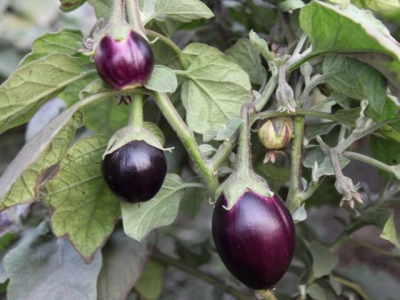How biotech crops can crash- and still never fail
The U.N. Food Systems Summit put biotechnology at center stage, although agroecological innovations offer greater promise for sustainability.
 How do you decide if your fruit trees need fertilizer? Ask an expert
How do you decide if your fruit trees need fertilizer? Ask an expert Gardening season has wrapped up for most people, but there are always questions. For answers, turn to Ask an Expert, an online question-and-answer tool
 How the Scottish are finding food solutions using vertical farming
How the Scottish are finding food solutions using vertical farming LED lights are flashing to match world flags from around the world, a nod to the international visitors in Scotland. A robot is whizzing around the place
 Field peas and the future of farming
Field peas and the future of farming Securing the future of food, a constant weight on the food and agriculture industry, has always been core to the mission of Puris.
 How to grow hydroponic lettuce - Instructions and plant care tips
How to grow hydroponic lettuce - Instructions and plant care tips There’s a reason why lettuce is one of the most popular hydroponic crops for both beginners and experts alike.
 Utilizing old dragon fruit branches to compost bio-organic fertilizer
Utilizing old dragon fruit branches to compost bio-organic fertilizer The Southern Horticultural Research Institute has introduced a new bio-organic fertilizers composting process utilizing discarded dragon fruit branches.
 Growing leeks in your garden
Growing leeks in your garden Most people associate leeks with soup. For this reason, many of my farmer clients grow them only for inclusion in winter soup packs. But leeks have many other
 Getting ready to plant cucurbits
Getting ready to plant cucurbits Before planting a land to any of the cucurbits, you should kill off all broad-leaved weeds nearby, preferably well beforehand.
 The basics of maize production
The basics of maize production Also known as corn, maize was first domesticated in southern Mexico nearly 10 000 years ago. Many varieties have been bred to suit a range of conditions.
 No-till: increasing soil organic content
No-till: increasing soil organic content With no-till farming, you need to try to gradually increase the organic content of the soil.
 Beware of that foliar feed mixture!
Beware of that foliar feed mixture! Company representatives often bombard farmers with products claimed to increase yield at little cost.
 The need for manure to be broken down
The need for manure to be broken down Suggested application rates for some common crops, including tomatoes and potatoes.
 How to fertilise a crop correctly
How to fertilise a crop correctly Readers frequently ask me for specific fertiliser programmes for their crops. I would happily oblige if all crops were the same!
 The benefits of organic matter
The benefits of organic matter In contrast, in a chemically based system, the interaction between the minerals becomes critical and complex, and a farmer needs a great deal of experience
 Growing in hot and dry conditions – Part 1
Growing in hot and dry conditions – Part 1 Here are some guidelines for growing vegetables under drought conditions.
 Slow US planting, growing seasons end in delayed corn, soybean harvest
Slow US planting, growing seasons end in delayed corn, soybean harvest Late-planted feed crops in the US may see harvest challenges from weather, moisture levels, drying costs and quality, says analyst.
 Know your soil – Part 5: the value of phosphorous
Know your soil – Part 5: the value of phosphorous Continuing with our discussion of the soil analysis, we now come to phosphorous (P).
 Know your soil – Part 4
Know your soil – Part 4 The pH of soil is a reflection of its acidity or alkalinity. In the absence of base minerals such as calcium (Ca), magnesium (Mg), potassium (K) and sodium (Na)
 Know your soil – Part 1
Know your soil – Part 1 This year has been designated the International Year of Soils by the United Nations, so it’s a fitting time to learn more about the properties of soil
 Know your soil – Part 3
Know your soil – Part 3 Generally, the price per hectare of farmland does not vary much across a region, but the land’s true value does vary according to its productivity.
